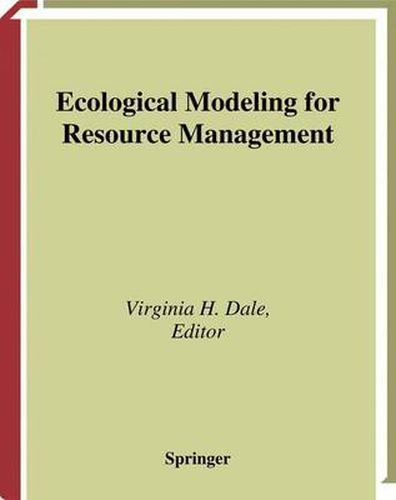Readings Newsletter
Become a Readings Member to make your shopping experience even easier.
Sign in or sign up for free!
You’re not far away from qualifying for FREE standard shipping within Australia
You’ve qualified for FREE standard shipping within Australia
The cart is loading…






This title is printed to order. This book may have been self-published. If so, we cannot guarantee the quality of the content. In the main most books will have gone through the editing process however some may not. We therefore suggest that you be aware of this before ordering this book. If in doubt check either the author or publisher’s details as we are unable to accept any returns unless they are faulty. Please contact us if you have any questions.
With the use of ecological models, managers and decision makers can make sure that the ecological systems affected by their decisions are accurately represented. Unfortunately, the most relevant ecological science and modeling techniques are often not used because managers are not familiar with them or find them inappropriate for their circumstances. The authors of this volume hope to close the gap between the state of the art in ecological modeling and the state of the practice in the use of models as decision-making tools. It will serve as a readable introduction to modeling for people involved in resource management and will also review specific applications of interest to more experienced modelers. The first chapters detail several successful uses of ecological models in resource management. There are then five pairs of chapters addressing important issues in ecological modeling, including barriers to the use of modeling in decision making, evolving approaches in the field, effective use of data, the toolkit approach to management, and the various scientific and technological investments required for productive modeling. Ecologists and other scientists will learn how best to focus their research for practical, real-world applications, and resource managers and other practitioners will learn the most appropriate methods of understanding dynamic processes and making projections about the implications of their decisions.
$9.00 standard shipping within Australia
FREE standard shipping within Australia for orders over $100.00
Express & International shipping calculated at checkout
This title is printed to order. This book may have been self-published. If so, we cannot guarantee the quality of the content. In the main most books will have gone through the editing process however some may not. We therefore suggest that you be aware of this before ordering this book. If in doubt check either the author or publisher’s details as we are unable to accept any returns unless they are faulty. Please contact us if you have any questions.
With the use of ecological models, managers and decision makers can make sure that the ecological systems affected by their decisions are accurately represented. Unfortunately, the most relevant ecological science and modeling techniques are often not used because managers are not familiar with them or find them inappropriate for their circumstances. The authors of this volume hope to close the gap between the state of the art in ecological modeling and the state of the practice in the use of models as decision-making tools. It will serve as a readable introduction to modeling for people involved in resource management and will also review specific applications of interest to more experienced modelers. The first chapters detail several successful uses of ecological models in resource management. There are then five pairs of chapters addressing important issues in ecological modeling, including barriers to the use of modeling in decision making, evolving approaches in the field, effective use of data, the toolkit approach to management, and the various scientific and technological investments required for productive modeling. Ecologists and other scientists will learn how best to focus their research for practical, real-world applications, and resource managers and other practitioners will learn the most appropriate methods of understanding dynamic processes and making projections about the implications of their decisions.